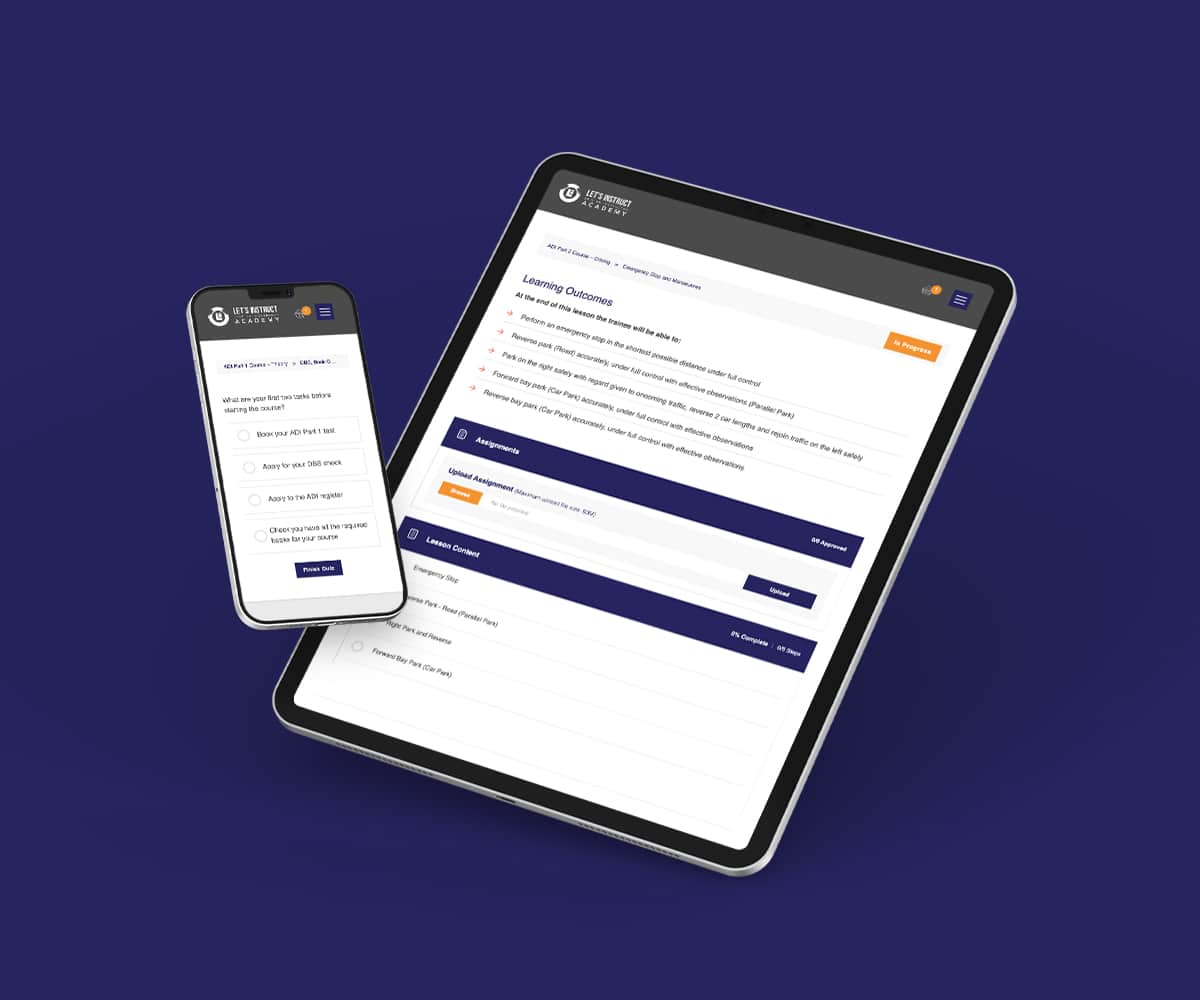Delivering Outstanding Customer Service as a Driving Instructor
Contents
- 1 Delivering Outstanding Customer Service as a Driving Instructor
- 2 Understanding the Significance of Communication
- 3 Engaging with Parents or Supervising Drivers
- 4 First Impressions Matter
- 5 Maintaining Service Levels
- 6 Keeping Records and Managing Expectations
- 7 Differentiating Your Business
- 8 Final Thought
Delivering Outstanding Customer Service as a Driving Instructor
In the highly competitive field of driver training, excellent customer service is not just a nice thing to have, it’s a fundamental element of long-term business success. As a driving instructor, your service quality directly affects your reputation, your ability to retain students, and the strength of your referrals. Whether you’re a seasoned trainer or a newly qualified professional, the following guidance will help you uphold professional standards, communicate effectively, and build lasting relationships with both learners and their families.

Understanding the Significance of Communication
Initial Contact with a New Customer
Your first conversation with a prospective learner, or their parent, sets the tone for the entire experience. Clear, honest, and respectful communication builds trust and manages expectations.
When asked, “How long will it take to pass?”, explain that the DVSA suggests an average of 45 hours of professional lessons plus 22 hours of private practice. Emphasise that this varies based on individual ability, confidence, and commitment.
You can focus on creating a realistic and affordable action plan that includes your theory test status, lesson frequency, and test availability. Both instructor and learner should commit to the plan—if you agree to six hours per week, deliver on it. Encourage the learner to attend on time and complete the agreed tasks.
Ongoing Communication with the Learner
Maintain professionalism in all interactions—be polite, calm, and constructive in your approach. Keep messages within working hours, avoid informal language or emojis, and stick to lesson-related topics.
A positive, supportive attitude helps learners stay engaged, even when progress is slow. Provide clear, actionable feedback while maintaining a positive and encouraging tone.
Engaging with Parents or Supervising Drivers
In many cases, it’s the parents who pay for lessons, especially with younger learners. Building a rapport with them can be highly beneficial, not only for the learner’s progress but also for your business growth through recommendations and reviews. Where appropriate, introduce yourself early and encourage them to observe lessons from the back seat occasionally. Provide updates on progress and offer guidance on how they can support private practice at home. Remember, learners who have access to structured private practice tend to perform better on tests. If a parent is acting as a supervising driver, it’s crucial to guide them on how to reinforce good habits instead of contradicting your teaching. Establishing a triangle of communication, comprising the learner, parent, and instructor, creates a more cohesive learning experience.


First Impressions Matter
A learner’s initial experience with you should establish a professional and reassuring tone.
Your Personal Presentation
Dress smartly in clean, suitable clothing. Where possible, opt for neutral or branded attire—this encourages professionalism and can be claimed as a business expense. Steer clear of anything that looks too casual or worn out. A neat appearance demonstrates respect for the learner and shows you take your role seriously.
Your Training Vehicle
The training car must be well-maintained, roadworthy, and free from clutter, odours, or visible damage. A clean car, inside and out, is not just about aesthetics; it also influences how comfortable and focused the learner feels. Avoid transporting items that could leave strong smells (such as pets or takeaway food), and regularly check that heating, air conditioning, and other features are functioning correctly.
Keeping your vehicle in excellent condition includes:
- Regular servicing
- Valid MOT, insurance, and tax
- Carrying spare bulbs or a spare tyre
- Knowing how to handle basic roadside repairs
Remember, a well presented car is part of the learning environment. The learner’s safety, comfort, and confidence depend on it.
Maintaining Service Levels
Life as an instructor involves managing daily uncertainties, such as traffic, cancellations, test centre problems, and more. Nevertheless, your dedication to high service standards must not waver. Keeping Your Word
If you’ve promised a particular lesson structure, availability, or level of support, follow through. Reliability builds trust. Offer learners added value by guiding them to useful online resources such as DriverActive, which complements their learning and demonstrates your broader support.
Handling Delays or Cancellations
Should you find yourself delayed, send a polite message or call in advance. If you need to cancel a lesson, provide as much notice as possible and offer to reschedule promptly. Likewise, approach customers with empathy and initiate changes, even if they cause disruption. Learners and parents may not always appreciate the wider business impact of their decisions. Stay calm, explain your position, and aim for a fair compromise.


Keeping Records and Managing Expectations
Recording progress is not just good practice, it’s essential. The National Standard for Driver and Rider Training (NSDRT) recommends clear, structured feedback at the end of each lesson. Using a suitable app or manual progress sheet, complete a session log with the learner. This should include:
– What was covered during the session
– What went well
– Areas for improvement
– Next steps
Such reflection enhances learning and helps set realistic expectations about test readiness. If progress stalls or accelerates, you will have a record to support your revised timeline.
Financial Records
Maintain an accurate record of lessons attended, payments received, and outstanding balances. This encourages transparency and prevents unnecessary misunderstandings. It also simplifies your accounting and tax return processes. Several mobile apps are available to help you track income, expenses, and appointments effortlessly.
Differentiating Your Business
In a competitive market, customer service is what will differentiate you from other instructors. Simple gestures, such as being punctual, offering flexible slots, following up after tests, or sharing helpful resources, create a memorable experience.
You might also consider small additional services, such as:
Sending a “well done” message after reaching a milestone
Providing printed learning materials
Offering short recap videos or voice notes
Creating a private Facebook group for learners and their parents. Every point of contact is a chance to impress and retain business.

Final Thought
Set the Standard
As a driving instructor, you’re not just teaching road skills—you’re providing a service that changes lives. Delivering outstanding customer care requires professionalism, empathy, and consistency at every stage of the customer journey. Treat every learner and parent with respect, communicate clearly, and uphold high standards in both presentation and reliability. Do this, and your reputation will grow in tandem with your business.
Remember, when customers feel valued and supported, they don’t just pass their test—they become your best client ambassadors.